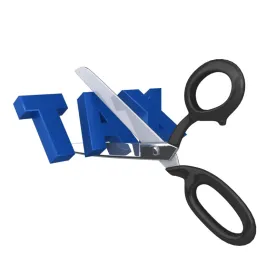On July 29, 2015, two members of the U.S. House of Representatives1 introduced draft legislation for public comment that would provide U.S. companies with a significant tax break on profits derived from qualifying intellectual property (IP) – including patents, inventions, formulas, processes, designs, know-how and any product that is produced using any such IP.2 The goal of this legislation, known as the Innovation Promotion Act of 2015, is to stimulate innovation by U.S. companies and to help keep high paying jobs in America. Various European countries have introduced similar legislation in recent years.3 Given its bipartisan support, the tax break on income derived from qualifying IP may be enacted into law in one form or another sometime this fall.
The proposed legislation would enable a company to deduct 71 percent of income derived from qualifying IP or 71 percent of their taxable income, if less.4 This translates to an effective income tax rate of about 10.15 percent on income derived from qualifying IP, down from the top corporate income tax rate of 35 percent. Even if this effective income tax rate is raised above 10 percent during the legislative process, this can still result in significant tax saving on income derived from qualifying IP.
The proposed legislation indicates that the tax savings would be effective for tax years after the date of enactment. Companies who already own patents and have pending patent applications at the United States Patent and Trademark Office (USPTO) on their products or services stand to benefit under this legislation. Companies who don’t own patents or don’t have pending patent applications at the USPTO on their products or services should consider whether they can apply for patent protection on their products or services. Since there are very strict non-extendable deadlines for filing patent applications after a product or service has been offered for sale, sold, or made publically available, companies should now consider what additional patent protection they can obtain for their products or services. Companies should also consider continuing to pay maintenance fees on issued patents that were previously considered to have lower value.
Thus, even before this legislation is enacted, companies should review their product innovation pipeline and consider stepping up their U.S. research and development programs together with their patent application and other IP filings to maximize their opportunity to benefit from this potentially significant tax break.
1 U.S. House of Representatives Charles Boustany (R-LA) and Richard Neal (D-MA).
2 See here.
3 For example, Belgium, Cyprus, France, Hungary, Luxembourg, Netherlands, Spain and the United Kingdom have introduced similar schemes. See, e.g.
4 According to the U.S. House Ways and Committee website, the proposed formula for determining how a U.S. company would compute its taxes on IP-related income is: (1) Identify gross receipts attributable to certain technology-based IP, (2) Subtract any related costs to determine the net profit from the IP, (3) Multiply this IP profit by the ratio of domestic R&D costs to total costs, and (4) Apply a 10 percent tax rate to the resulting profit (instead of the general 35 percent corporate rate).





 />i
/>i
